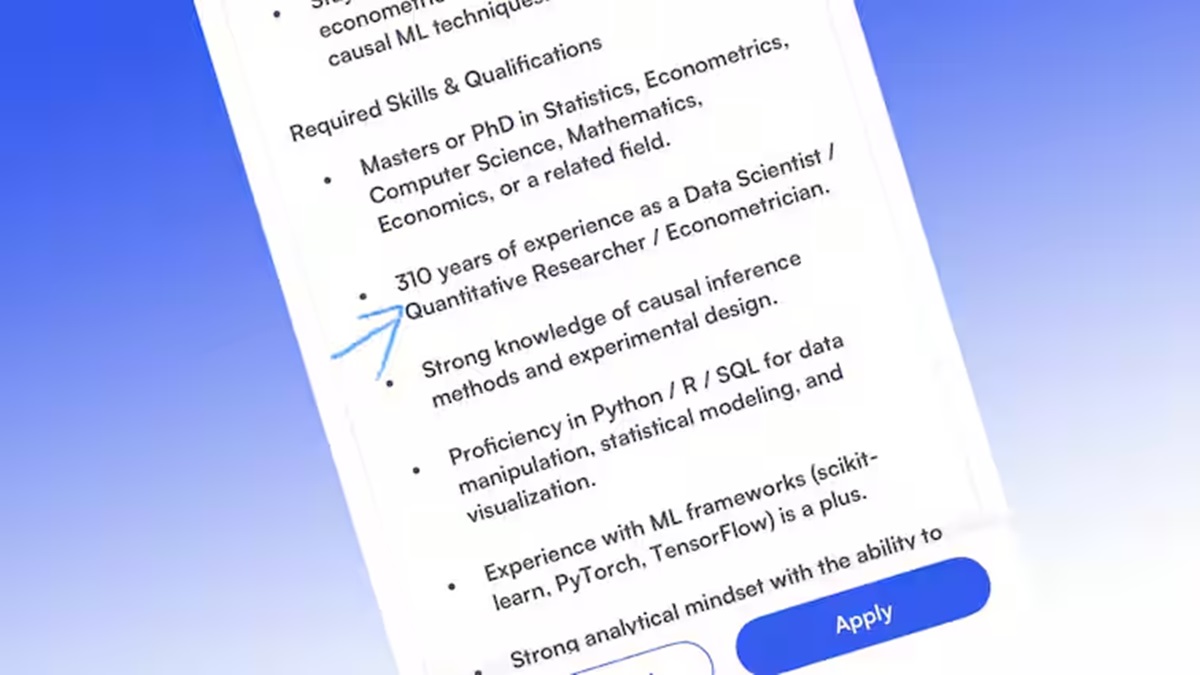For decades, work followed a simple blueprint: companies created roles, wrote job descriptions, and hired people to fill predetermined boxes. Employees were expected to adapt to the structure, not the other way around. Today, however, a quiet revolution is reshaping this fundamental assumption. A growing number of organisations are discovering that their competitive edge lies not in making people fit jobs, but in making jobs fit people.
The promise of personalisation
The concept is deceptively simple. Rather than forcing square pegs into round holes, companies are carving out roles that match individual strengths, interests, and working styles. Early adopters report compelling results: higher engagement, stronger retention, and productivity gains that traditional incentives struggle to match.
“Personalised work is a powerful concept. It can significantly boost engagement, productivity, and retention by aligning roles with individual strengths, interests and working styles.”
Jaikrishna B, President And Group Head- HR, Amara Raja
“Personalised work is a powerful concept,” explains Jaikrishna B, president and group head- HR, Amara Raja. “It can significantly boost engagement, productivity, and retention by aligning roles with individual strengths, interests and working styles.” For organisations, this alignment creates what he calls “a sustainable growth engine that is far more powerful than traditional incentives.”
The appeal extends beyond performance metrics. Employees increasingly seek roles that reflect their identity and aspirations, not merely their qualifications. In a talent market where skilled workers command premium salaries and better conditions, personalisation offers a differentiator that money alone cannot buy.
The practical constraints
Yet scratch beneath the surface, and personalisation reveals its limitations. Jaikrishna is candid about the challenges: “It isn’t always practical in every company or sector.” Highly regulated industries—aviation, financial services, large-scale manufacturing—demand consistency and compliance that leave little room for bespoke arrangements.
“Test, embellish, improve and impact should be the mantra.”
R Venkattesh, Former President, DCB Bank
The problem becomes more acute when organisations attempt to scale personalised approaches. What works for senior talent or knowledge workers can become an “operational nightmare” when applied broadly, warns R Venkattesh, former president, DCB Bank. The risk is creating continuity gaps, knowledge loss during transitions, and difficulties in managing an increasingly complex workforce.
Even technology companies, seemingly natural candidates for personalisation, struggle with the balance. Internal mobility platforms and AI-driven task allocation promise seamless customisation, but they often bump against the reality of project deadlines, team dynamics, and business priorities that don’t bend to individual preferences.
The fundamental question
Venkattesh frames the debate with a provocative question that cuts to the heart of organisational design: “Do we first create an organisation structure and then look for people for the roles aligned to the structure, or do we first get the people and then align the structure based on their uniqueness?”
This inversion of traditional thinking captures why personalisation feels simultaneously compelling and unsettling. Most professionals, Venkattesh observes, acquire in-demand skills simply to secure employment, yet these may not align with their inherent strengths or genuine interests. The result is often disengagement masquerading as competence.
His analogy is vivid: “Take the case of filmmakers: they make the film, put all their efforts into the job and enjoy the whole process of filmmaking as they are passionate about it. Similar outcomes can be achieved if we create roles that are aligned to individual strengths and interests.”
Finding the middle ground
The solution, emerging practitioners suggest, lies not in wholesale personalisation but in strategic flexibility. Even within rigid frameworks, meaningful customisation remains possible. Manufacturing environments can rotate employees across tasks to break monotony. Financial services can offer mentorship programmes that channel growth aspirations. Technology companies can allow employees to shape project portfolios whilst maintaining delivery commitments.
Jaikrishna advocates starting small: “The key is balancing business needs with employee preferences in a thoughtful way.” Rather than revolutionary change, he champions evolutionary adaptation—co-creating goals with managers, offering flexible scheduling where feasible, or simply giving employees more voice in team assignments.
A measured approach
Smart organisations are learning to thread this needle by treating personalisation as a strategic tool rather than a universal policy. They pilot approaches carefully, focusing initially on roles where customisation delivers clear returns. Senior HR leader Raj Narayan captures this balance: “The future belongs to organisations that can marry structure with flexibility. Personalisation does not mean dismantling processes—it means creating space within them for individuality to thrive.”
Internal mobility has emerged as one of the most effective personalisation strategies. Employees who can move across departments, take on short-term projects, or reskill into new functions feel they are growing without needing to leave the organisation. Learning platforms that provide personalised recommendations allow employees to invest in skills that align with both organisational needs and their career aspirations.
Venkattesh suggests a pragmatic framework: “Test, embellish, improve and impact should be the mantra.” Rather than attempting organisation-wide transformation, companies can identify specific areas where personalisation offers clear advantages whilst maintaining structure where it serves essential functions.
The new employer value
The rise of personalised work signals a fundamental shift in the employer-employee relationship. Where organisations once demanded conformity, they now increasingly embrace individuality—not from altruism, but from competitive necessity.
As the workforce becomes more diverse, digital tools more sophisticated, and competition for talent more intense, the case for personalisation will only strengthen. The companies that learn to balance flexibility with structure, individual aspirations with collective goals, will find themselves with a decisive advantage in the battle for talent.
The question is no longer whether personalisation will reshape work, but how quickly organisations can adapt to this new reality without losing their operational coherence.




















